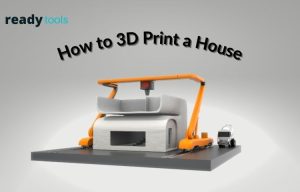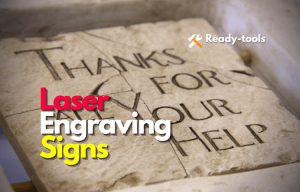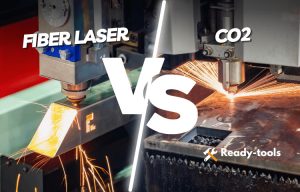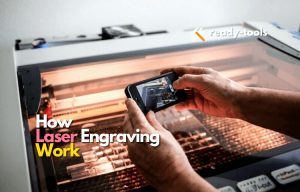Laser engravers are perhaps the most versatile tools for every workshop. The powerful laser beam can cut, etch, and engrave several hard and soft materials. Moreover, some types of laser engraving also work on food items like ham and cheese. So, it won’t be wrong to say that you can create wonders by using something as simple as a laser engraver.
However, most people only use their laser to work on common wood and plastic. So, people often consider them the only etchable materials. In reality, your laser engraver projects can be done on anything from wood and plastic to acrylic, ceramics, acrylics, and even some metals. This article includes a comprehensive guide about common materials for laser engraving so that you can understand your limits.
Introduction to Laser Engraving:
A laser engraver is a device that engraves and cuts various pre-programmed designs on various surfaces with a powerful laser beam. The high-intensity laser instantly melts the topmost surface of the material, making a groove. These grooves are the exact replicas of your design. Moreover, you can further deepen the groove by increasing the laser power to separate the design from the material sheet.
People who are new to laser technology are often overwhelmed by its numerous possibilities of it. Fortunately, the best laser engravers live up to your expectations, providing you with several cool things to laser engrave without any problems. However, before you start engraving, you must first understand the basics of laser engraving.
In this regard, mastering the laser-cut design software and understanding, all the important laser compatible materials are first on the list. Once you have mastered these skills, you can call yourself a master laser engraver whose talents are not bound to anything.
Commonly Used Materials for Laser Engraving:
Laser engraving can be as easy as creating a design on the computer and using your device to imprint it on a material of your choice. However, there are certain limitations that you must consider mastering the art of laser. For instance, there are two types of laser engravers in the market, i.e., CO2 and fiber laser. The CO2 laser is an engraver for all materials like wood, plastic, rubber, leather, fabric, food, and paper.
On the contrary, a fiber laser engraver is suitable for hard metals, steel, and jeweler. Furthermore, different materials require varying laser power for engraving and cutting. Thus, finding the best materials for laser engraving won’t be a problem if you understand what you need. Here are a few common items that you can work on in your laser engraver projects.
Laser Engraving on Wood:
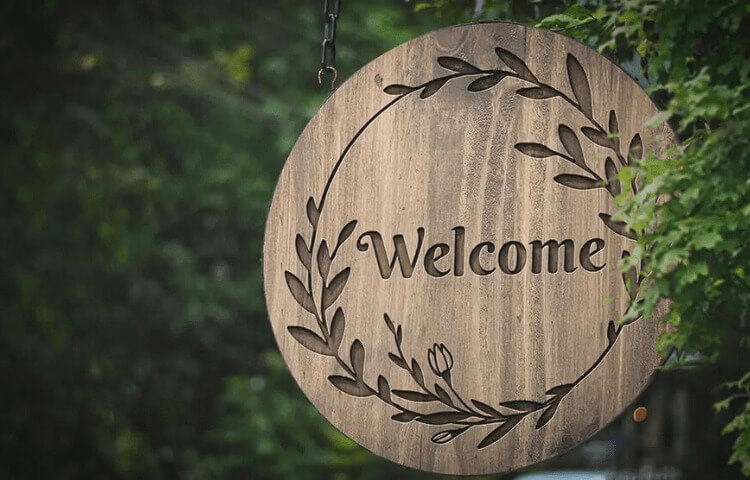
Wood is by far the most common item used for laser engraving. It is a natural material that contains fibers and cellulose. These molecules melt or burn when they come in contact with the powerful laser. As a result, you can easily form various designs on a wooden board, even with a low-powered laser device. Another benefit of laser engraving wood is that the partial combustion of cellulose produces elegant burn marks and textures on the surface, making it very beautiful.
However, different types of woods have their pros and requirements. For instance, you need a comparatively higher laser power to engrave on hardwoods than the softwoods like balsa, which can be engraved even with a 25W laser module. In any case, it is important to understand the laser engraving settings for different materials by consulting the supplier for the best results.
Laser Engraving on Glass:
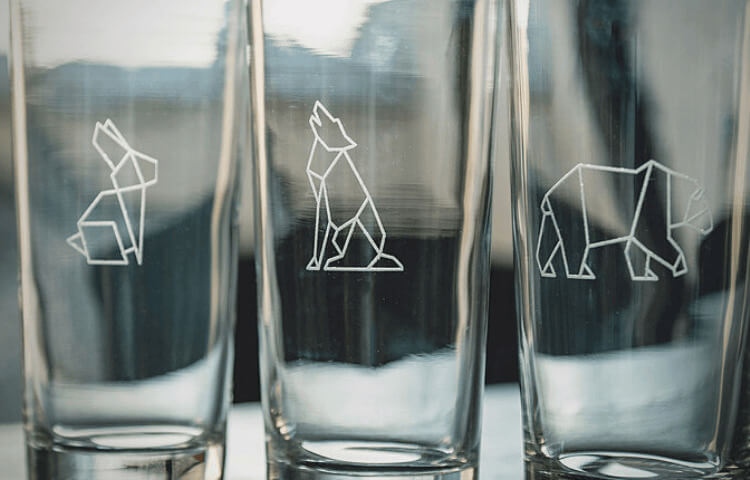
Glass is yet another commonly used item for laser engraving. The uniform glass surface makes a perfect surface for imprinting your designs or laser-cutting names. The material is usually used for customizing wine bottles or writing names and quotes on cups or mugs. However, there are several types of glass available in the market. Therefore, it is important to understand the nature of the material before placing it in the work area of your laser.
The first thing to consider is that a flat glass slab is different from a cup with a curved surface. Similarly, you need to use different laser settings and attachments to work with such materials. A flat glass slab is easy to engrave with a CO2 laser as it has a uniform structure. The laser heat is perfectly distributed throughout the surface, forming a perfect finish. However, if you use too much laser power, you will experience some chipping and ruin the design.
Similarly, a curved glass, cup, or mug is a completely different story. Firstly, a typical laser won’t engrave curved surfaces. You must use a laser engraver with a cylindrical work area for that purpose. Moreover, the laser software of curved glass uses the WYSIWYG editor for the job. Another way to prevent accidental damage is to mask the glass surface with a paper or towel to lower the heat of the laser. However, please ensure that the masking is free from wrinkles; otherwise, your final design won’t be as perfect as you expect.
Laser Engraving on Leather:
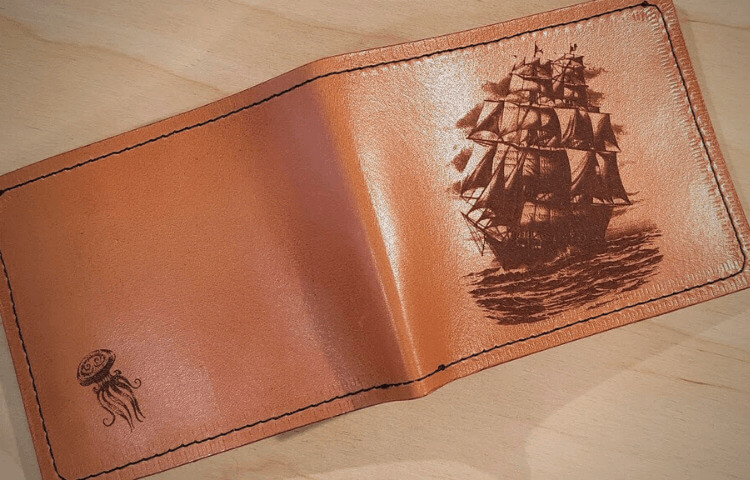
Ever wonder how they design the belts with such complex designs? The answer is simple, with the help of a laser cutter. The pinpoint accuracy of the laser engraver ensures that the laser doesn’t move even a millimeter from the design path. So, it is possible to engrave or cut leather in almost any design you want.
In short, leather is the best material for laser cutting and engraving. The organic molecules of leather burn and vaporize under the action of a laser beam. So, you can easily work with any type of leather, including suede and Nubuck leather. The problem is you must adjust the laser settings according to your needs to prevent damaging the delicate surface.
Another thing to consider when laser engraving leather is the color and nature of the material. Synthetic leathers are suitable for engraving and cutting. Similarly, the light-colored leathers are perfect for engraving, whereas the dark-colored leathers are only suitable for laser cutting. The darker leathers hide the engraving, making all your efforts a waste. So, it is best to consult the laser engraving material’s suppliers before using them in your projects.
Laser Engraving on Acrylic:
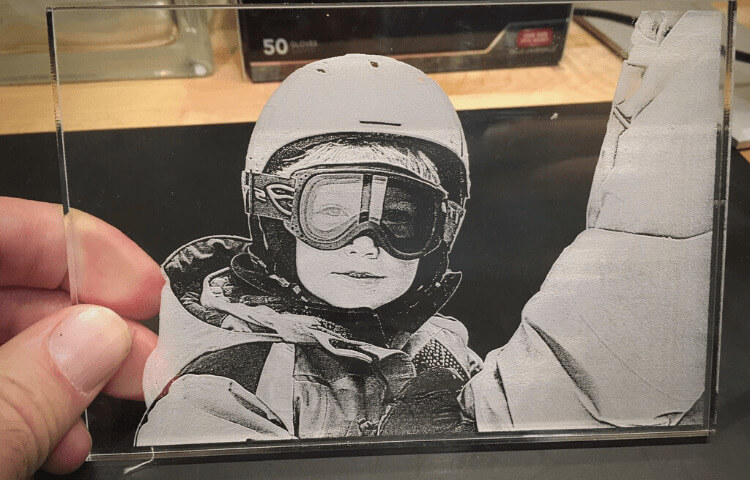
Acrylic is a common substitute for glass and thick plastic sheets. The material is also known as polymethyl methacrylate (PMMA) or goes by the name of plexiglass. Acrylic material is perfect for all laser projects that include engraving and cutting. However, it is important to understand the nature of the material before choosing it.
Plexiglass is manufactured in two ways, i.e., cast and extruded. The casted acrylics yield a frozen surface when engraved by a laser. So, it is perfect for engraving some elegant designs and decor items. On the other hand, extruded PMMA remains clear even after engraving with a powerful laser engraver. So, extruded PMMA is vital for laser-cutting signboards and banners.
One way to work on acrylic is reverse mirroring. The process imprints a reversed image on the transparent surface that appears normal on the backside of the sheet. This technique is widely used for branding and marketing. So, mastering the art of laser engraving acrylic can be very fruitful for your business.
Laser Engraving on MDF:
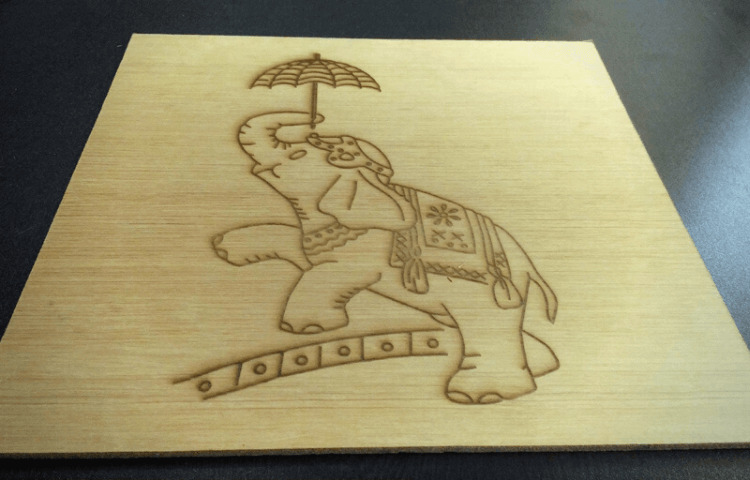
MDF or Medium Density Fiberboard is a synthetic wood produced by combing different woods and resins. The material is highly durable and isn’t prone to environmental damage. So, the engravings won’t fade over time even if you place them outside in the street. The problem is that MDF is too hard to cut even with a CO2 laser.
So, it is only suitable for laser engraving and not for laser cutting. The benefit of using MDF in your projects is that the results are perfect, free from irregularity, and long-lasting. So, if you are looking for the best wood for laser engraving, I suggest that you try your skills on MDF.
Laser Engraving on Metal:
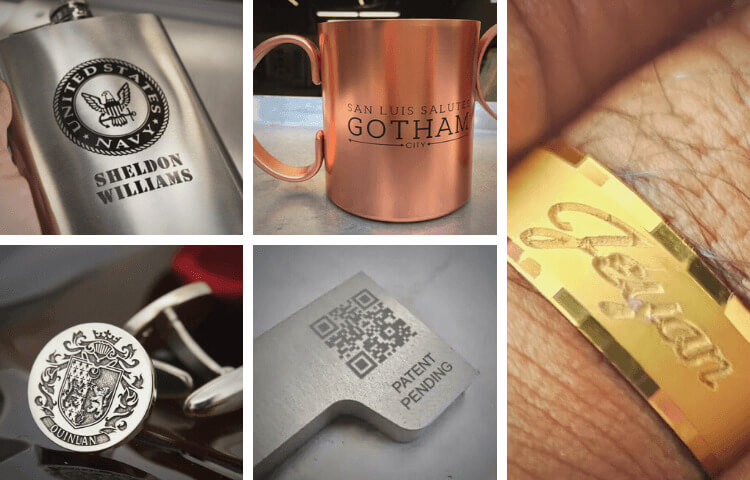
Engraving and cutting metals with a laser is a completely different story. The hard metal surface doesn’t melt easily under a CO2 laser, cutting it out of the question. So, it would help if you had an industrial CO2 or fiber laser engraver to work on metals. Fortunately, some basic CO2 lasers can engrave on soft metals, aluminum, and jewelry.
Other than that, if you want a laser that cuts through metal, steel, or copper, only a fiber laser can get the job done for you. Here are some metals that have been tested with different types of laser engravers. However, you are not limited to these metals; feel free to experiment with your own materials and let us know.
- Steel
- Copper
- Iron
- Stainless steel
- Aluminum
- Brass
- Silver
- Gold
- Palladium
- Titanium
- Platinum
- Carbides
Laser Engraving on Fabric:
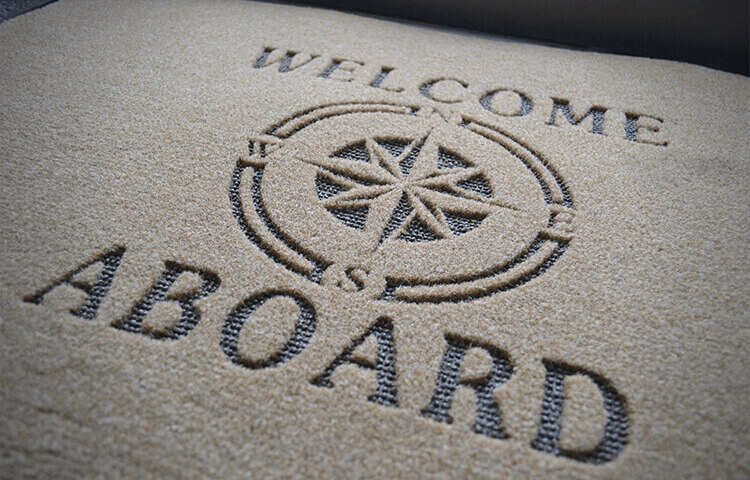
Fabric is yet another one of the commonly used materials for laser engraving. The benefit of laser engraving different fabrics is that you don’t need a powerful laser as long as the material is engravable. Designers use a laser to mark cotton, linen, nylon, silk, and wool products.
However, some synthetic fabrics deform under the intense heat of the laser. These fabrics are often made from polymers that release fumes from burning. Therefore, it is important to understand the nature of the fabric before you start designing or customizing clothes.
Laser Engraving on Stone:
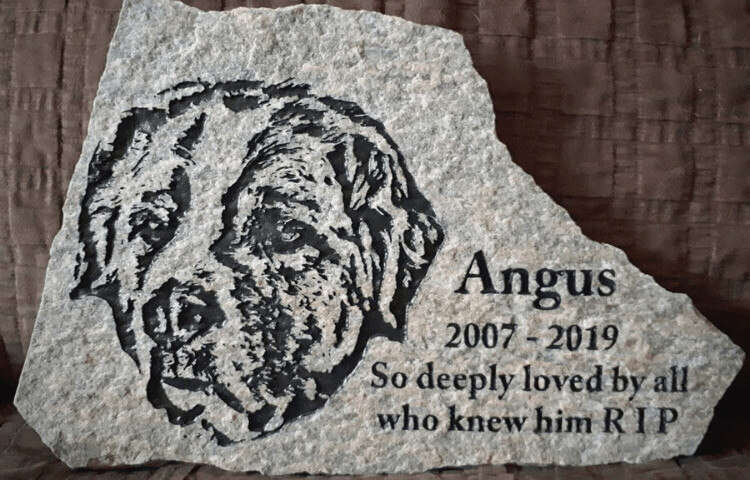
As you know, there are various types of rocks and stones found on earth. Working with each type is different as all of them have various mineral and chemical compositions. It is impossible to cut a stone with a laser in any case. So, your only option is to engrave it with your laser device to form elegant designs.
Engraving stones with a laser are a matter of trial and error. No guide on the Internet can tell you for sure what laser engraver settings you must use. So, start with lower laser power and gradually increase till you notice engraving on the sample. Save these settings in your laser software sure for future reference. After that, it’s all a matter of designing, and the laser engraver will take care of the rest for you.
Laser Engraving on Laserable Rubber:
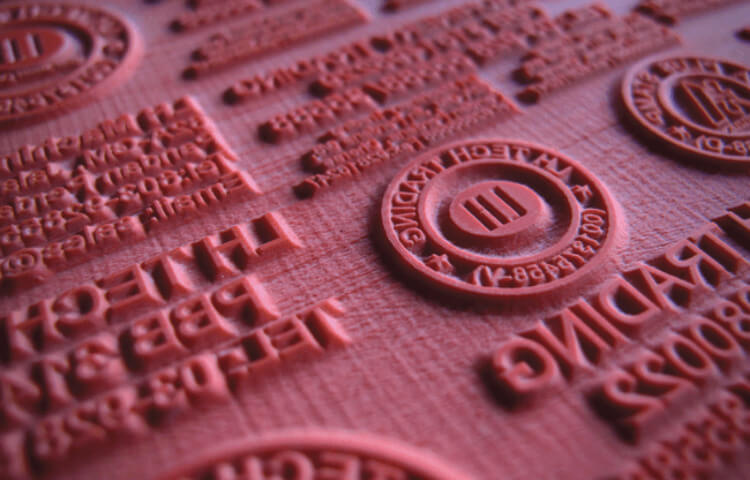
Rubber is the perfect material for laser engraving and cutting. The soft rubber fibers quickly vaporize under the action of even a low-power laser engraver. Moreover, the process doesn’t leave any residue or molt on the surface as the ventilator removes the vaporized rubber.
The only thing that you must consider is the laser settings. Too low laser won’t affect the rubber, and too high power will cut it instead of engraving. Fortunately, most laserable rubber suppliers provide a user manual and specifications chart. So, you can consult the documentation for laser power, speed, and other settings.
Laser Engraving on Cardboard:
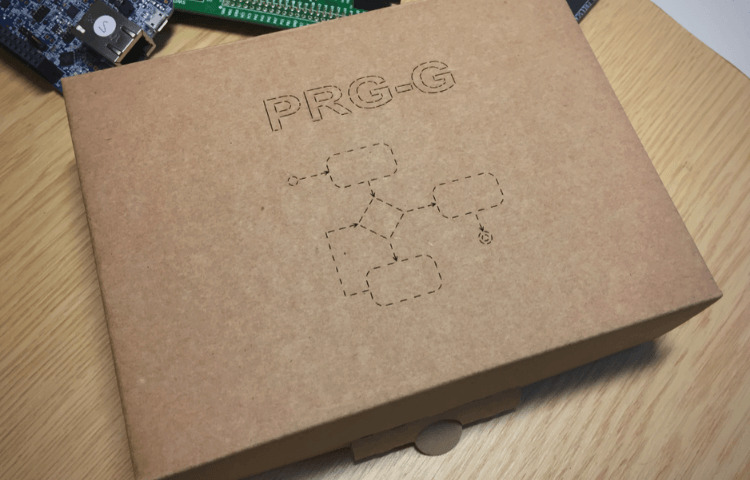
Cardboard is an inexpensive and common material for laser engraving. It is a universal and versatile material that you can use in almost any laser project regardless of its complexity. Moreover, you don’t need to worry about accidental damage as there won’t be any. Carboard reacts to laser the same way as a wooden sheet.
It is made from wood fibers and cellulose that melts or burns under the laser. The only thing that you must consider is your requirements. The dark color won’t show engravings as it looks like burn marks. So, the darker cardboards are suitable for laser cutting, while the light or grey colored cardboard is perfect for laser engraving.
Frequently Asked Questions:
How does a laser cutter work?
A laser cutter is a tool that uses a powerful laser beam to melt or burn any material placed under it quickly. The melted material forms a groove on the surface known as an engraving. The engraving is the same as the design that you are trying to make. If you allow the laser to continue after this stage, the grooves deepen and separate from the material sheet.
What materials can your laser engrave?
You can use a laser engraver for working on various soft and hard materials. Usually, it is used for engraving wood, plastic, leather, acrylics, cardboard, fabrics, and some metals. However, the list isn’t limited to these materials, and you can experiment with materials of your choice.
What materials can a fiber laser engrave?
Fiber laser engraver comes with a powerful laser module that cuts through hard materials and different metals. However, you can also use it for engraving hard and thick metal sheets on low laser settings.
Conclusion:
The laser engraver is a versatile device that you can use for various projects. The powerful laser beam can melt, etch, and cut almost any material that you want. However, some people often think that you can only use wood or metal. In reality, the list of materials for laser engraving is very long, all having different requirements. Therefore, this article discusses the common materials for laser engraving.

